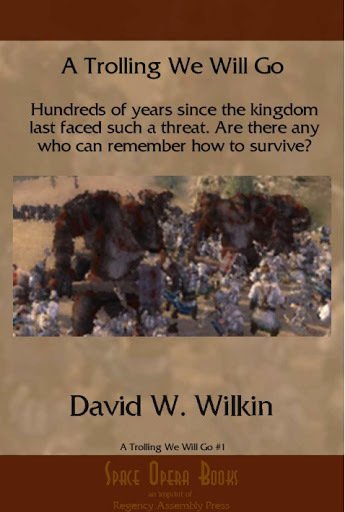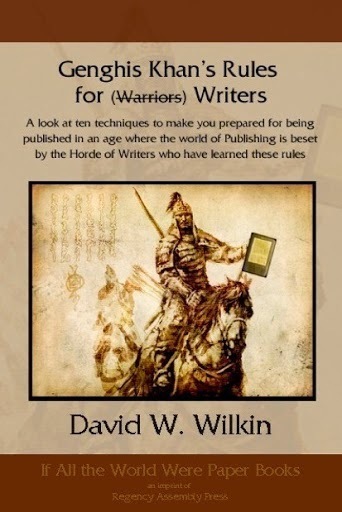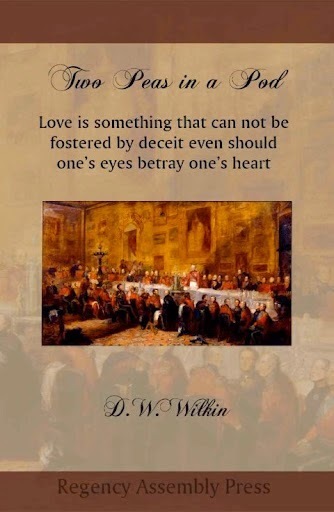D.W. Wilkin's Blog, page 159
January 14, 2015
Regency Personalities Series-Samuel Hoare Jr.
Regency Personalities Series
In my attempts to provide us with the details of the Regency, today I continue with one of the��many period notables.
Samuel Hoare Jr.
9 August 1751 ��� 14 July 1825
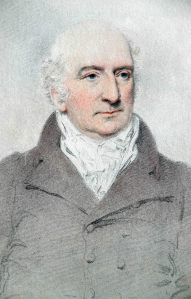
Samuel Hoare Jr.
Samuel Hoare Jr. was a wealthy British Quaker merchant and abolitionist born in Stoke Newington, the north of London. He was one of the twelve founding members of the Society for the Abolition of the Slave Trade.
His parents were Samuel Hoare (1716-1796), a London merchant from an Irish background, and Grizell Gurnell (1722? – 1802), of Ealing. It was a numerous family, although the eldest son, Joseph, died at 25. His only surviving brother Jonathan, merchant of Throgmorton Street, partner in Gurnell, Hoare & Co, built a mansion in what became Clissold Park, across Stoke Newington Church Street from the family home in Paradise Row. Jonathan ran into financial difficulties, which led Samuel Jr to attempt to assist him. One of their sisters married Thomas Bradshaw, a linen manufacturer in Ireland. Another, Mary, married the abolitionist Joseph Woods and bore the more famous botanist and architect son of the same name. The youngest sister Grizell (1757-1835) married Wilson Birkbeck in 1801, having stayed at home as nurse and companion to her father; as a wealthy 72 year old widow, she married William Allen, another notable Quaker abolitionist, with whom she founded Newington Academy for Girls in 1824. Their elderly marriage was greeted by a satirical cartoon entitled “Sweet William & Grizzell-or- Newington nunnery in an uproar!!!” by Robert Cruikshank.
Samuel Jr was sent away to school when he was five years old, returning home only once a year. The school was in Penketh, between Warrington and Widnes on the Irwell, and was run by Gilbert Thompson. In his mid teens he became apprenticed to Henry Gurney in Norwich, a woolen manufacturer. He had some connection with the Freshfield family there; James William Freshfield lived in Fleetwood House on Stoke Newington Church Street. He followed several branches of the Hoare family in pursuing a career in banking.
He married Sarah (1757���1783), the eldest daughter of Samuel Gurney (1723���1770) of the Gurney family (Norwich), and 90 friends and relatives witnessed their marriage. They lived first in Old Broad Street and could afford four servants without scrimping. Their children were Sarah (b. 1777), Hannah (b. 1779), and Grizell (known as Sophia or Sophy) (1781), and a son.
Hannah died ten days later, and was buried at Winchmore Hill. The widower moved his family back to Stoke Newington, in the same street as his father, so that his sisters, particularly Grizell, could help raise the children.
His main interest at this time was the abolition of the slave trade and the establishment of Sunday schools across the country. He was also involved in a plan to establish a free black colony in Sierra Leone. Many of his neighbours were abolitionists. From 1774 James Stephen spent his summers in Stoke Newington at the Summerhouse next to Fleetwood House.
In 1772 he became a junior partner in the Lombard Street bank of Bland and Barnett, which became Barnett, Hoare & Co. The bank traded under the sign of the black horse. Further mergers followed, to form Barnetts, Hoares, Hanbury & Lloyd and unlimately in 1884, Lloyds Banking Company took over Barnetts, Hoares, Hanbury & Lloyd in a bid to gain a foothold in London and acquired the black horse sign which continues in use as the Lloyd’s TSB logo. The leading partner in Barnetts, Hoares, Hanbury & Lloyd, Edward Broadie Hoare, joined the Lloyds board of directors and became Deputy Chairman.
In 1788 he married the nineteen-year-old daughter of Henry and Mary Sterry, of Bush Hill, Enfield and Hatton Garden. The family holidayed in Cromer, and kept up the connections with his first wife’s relatives. Later his illness drove him to take the family to Bath, where a medical man advised him that the New River, running so close to Stoke Newington Church Street and Clissold Park, might be harming his health. In 1790 they moved to higher ground: Heath House, a prominent mansion in Hampstead.
In 1794 they became friends with Anna Laetitia Barbauld, and through her met Joseph Priestley. They knew Amelia Alderson, later Mrs Opie, Mary Knowles, the intimate of Samuel Johnson, and William Savory, a Philadelphia minister. In Bath in a later year he conversed with Hannah More.
In 1802 his daughter Hannah married Thomas Marlborough Pryor. His son Samuel (1783���1847) learned banking in Lombard Street from 1803, and in 1806 he married Louisa Gurney (1784 – 1836) of Earlham Hall near Norwich. This connected the family to (Gurney’s Bank), and also to Louisa’s siblings Elizabeth Fry, prison reformer, Joseph John Gurney and Samuel Gurney, philanthropists, and Daniel Gurney, banker and antiquary. The marriage was strongly supported by Samuel Hoare Jr. According to his daughter Sarah, “I know of no event which gave my father more pleasure than the engagement of his son to the daughter of his old friend. With perfect confidence in her principles, and a persuasion that she would make my brother happy, he was pleased with her being, like my mother, a Norfolk woman, and interested himself much in procuring for them an house at Hampstead that they might be established near him.”
His descendants included Sir Samuel Hoare, M.P., and Viscount Templewood.
His banking firm later merged with those of Joseph John Gurney and Barclays to form part of Barclays Bank
The historian Peter Brock notes that Hoare wasn’t wholly convinced by Quaker pacifism and quotes him as saying that he “looked upon [war] in the present state of society as a necessary evil” and that it “is the duty of a man to defend his country”.

Space Opera Books Presents A Trolling We Will Go (Book #1)
A Trolling We Will Go
Not only do I write Regency and Romance, but I also have delved into Fantasy.
The Trolling series, (the first three are in print) is the story of a man, Humphrey. We meet him as he has left youth and become a man with a man���s responsibilities. We follow him in a series of stories that encompass the stages of life.
We see him when he starts his family, when he has older sons and the father son dynamic is tested. We see him when his children begin to marry and have children, and at the end of his life when those he has loved, and those who were his friends proceed him over the threshold into death.
All this while he serves a kingdom troubled by monsters. Troubles that he and his friends will learn to deal with and rectify.
It is now available in a variety of formats. For $.99 you can get this fantasy adventure.
Barnes and Noble for your Nook
The Valley Kingdom of Torahn had been at peace for fifty years since the Council of Twenty-One saw fit to dispense with their royal family.
The only Kingdom without a King on the west side of the continent. But late last year, something caused the Goblins in the Old Forest, Karasbahn to stir and act courageous.
Something that men can not remember seeing Goblins ever doing. What has gotten the Goblins in such a state?
Whatever it is, it can not be good news for Torahn. Or for Humphrey, a woodcutter for a small town, far from Karasbahn.
But part of the Kingdom���s militia, with no family or other exemptions. He is perfect to be sent to the Old Forest and find out what scares the Goblins that they have become fearless.
Feedback
If you have any commentary, thoughts, ideas about the book (especially if you buy it, read it and like it ;-) then we would love to hear from you.

January 13, 2015
Regency Personalities Series-William Maginn
Regency Personalities Series
In my attempts to provide us with the details of the Regency, today I continue with one of the��many period notables.
William Maginn
10 July 1794 – 21 August 1842
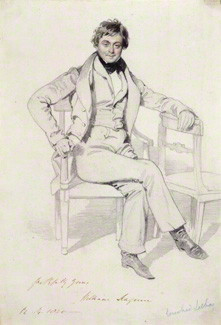
William Maginn
William Maginn was a journalist and miscellaneous writer, born at Cork, became a contributor to Blackwood’s Magazine, and after moving to London in 1824 became for a few months in 1826 the Paris correspondent to The Representative, a paper started by John Murray, the publisher. When its short career was run, he helped to found in 1827 the ultra Tory Standard, a newspaper that he edited along with a fellow graduate of Trinity College, Dublin, Stanley Lees Giffard; he also wrote for the more scandalous Sunday paper, The Age. In 1830 he instigated and became one of the leading supporters of Fraser’s Magazine. His Homeric Ballads, much praised by contemporary critics, were published in Fraser’s between 1839 and 1842. In 1837, Bentley’s Miscellany was launched, with Charles Dickens as editor, and Maginn wrote the prologue and contributed over the next several years a series of “Shakespeare Papers” that examined characters in counter-intuitive fashion (e.g., the key to Falstaff is his melancholy). From “The Man in the Bell” (Blackwood’s, 1821) through “Welch Rabbits” (Bentley’s, 1842) he was an occasional though skillful writer of short fiction and tales. His only novel, “Whitehall” (1827) pretends to be an historical novel set in 1820s England written in the year 2227; it is a droll spoof of the vogue for historical novels as well as the contemporary political scene.
In 1836, he fought a duel with Grantley Berkeley, a member of Parliament. Three rounds of shots were fired, but no one was struck. Berkeley had brutally assaulted magazine publisher James Fraser over a review Maginn wrote of Berkeley’s novel Berkeley Castle, and Maginn had called him out.
One of the most brilliant periodical writers of his time, Maginn left little permanent work behind him. In his later years, 1842, his intemperate habits landed him in debtor’s prison, and when he emerged through the grace of the Insolvent Debtor’s Act he was in an advanced stage of tuberculosis. He wrote until the end, including in the first volume of Punch, but he died in extreme poverty in Walton-on-Thames in August 1842, survived by his wife Ellen, and daughters Annie and Ellen, and son John.

Rules for better writing from Genghis Khan
The Rules for Writers
Those who follow me for a long time know that I also write in other fields aside from Regency Romance and the historical novels I do.
A little while ago, before the end of 2011 and the 2011 NaNoWriMo, (where I wrote the first draft of another Regency) I started work on a project about writing.
The premise was what one should think about when starting and working on a project. I came up with 10 rules to follow in a quest to become a writer and tackle that novel.
Here are The 10 Rules:
1) Read like a writer
2) Have a good story
3) Your work will be Thematic
4) Plot: The seven deadly ones
5) Characters will carry your tale, near and far
6) Words are your warriors
7) Stories are structured
8) All tales building to a Crescendo
9) Genghis edits history, shouldn���t you as well
10) Act like a writer
So it is now released. For $4.99 you can get this treatise on honing your skills.
Barnes and Noble for your Nook
Genghis Khan came from the Steppes of Mongolia, a family torn apart by neighboring tribes, to unite those tribes, or defeat them, and then conquer the greater part of the known world. His heirs would continue his conquest right to the edge of western society. The world feared the Mongols, and Genghis. Now, you can benefit, as a writer from the lessons he has to impart on how, with the changing world of publishing, you can perfect your work and write not only good material for this new age of book publishing. But can write great work for this new age. 10 simple lessons, and you will be on your way to conquering the bookshelves of the 21st century. This short book will have you learning all you really need to know to elevate your writing to the next level. These simple lessons will start you on the road to better writing as a member of the Horde in no time.
Feedback
If you have any commentary, thoughts, ideas about the book (especially if you buy it, read it and like it ;-) then we would love to hear from you.

January 12, 2015
Regency Personalities Series-Thomas Kirk (Sculptor)
Regency Personalities Series
In my attempts to provide us with the details of the Regency, today I continue with one of the many period notables.
Thomas Kirk (Sculptor)
1781 – 19 April 1845
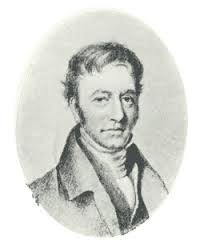
Thomas Kirk
Thomas Kirk was born in Cork. He studied at the Dublin Society’s School where he won prizes in 1797 and 1800. He later worked for Henry Darley, a skillful builder and stone-cutter from Meath, based in Abbey Street, Dublin. Kirk was acclaimed for his fine relief work on mantle-pieces and monuments. Much of his work can be seen in the Royal College of Surgeons, the Royal Dublin Society and in the library of Trinity College, Dublin. He worked on committees in the Royal Dublin Society and he was a member of the Royal Hibernian Academy.
He executed numerous church memorials throughout the country. His favourite relief was one of the Good Samaritan, which was well suited for memorials to either doctors or clergymen.
One of his earliest commissions, which appeared in 1809, was the statue of Nelson for Nelson’s Pillar in O’Connell Street, Dublin. This monument was destroyed by an explosion on March 8, 1966. Another of Kirk’s commissions was the statue, in Limerick, of Thomas Spring Rice, a former MP and Chancellor of the Exchequer.
He died in 1845 and is interred in Mount Jerome Cemetery, Dublin. His sons, Joseph Robinson Kirk (1821-1894) and William Boyston Kirk (1824-1900), daughter Eliza Kirk (b. 1812) and grandson Thomas Stewart Kirk (1848-1879) were also sculptors. His eldest daughter Mary Anne was a Greek scholar and accomplished musician.
After his death his works were exhibited at the 1852 Irish Industrial Exhibition, the 1852 annual exhibition of the Royal Hibernian Academy and the 1872 Dublin Exhibition of Arts, Industries and Manufactures.
His famous works:
Jane Vernon (née Kingsbury, wife of Reverend George Vernon, Rector of Carlow, died 1827 aged 29) in St. Mary’s church, Carlow. Kirk’s relief shows the poor and the young of Carlow mourning her. To the left are the tools of Jane Vernon’s accomplishments: a harp, an easel and a sculptor’s chisel.
Nathaniel Sneyd (died 1833) had two memorials, one in Cavan and a life-size neo-classical recumbent effigy in the crypt of Christ Church Cathedral, Dublin. Kirk represents Sneyd lying dead with a female figure weeping over him.
Rev. Joseph Storey (d. 1838) in Cavan.
Rev. George Hill (d. 1837) at Comber, County Down.
Several memorials in St. Ann’s Church, Dublin.
John Chambers (d. 1800), in St. George’s church, Dublin.
Thomas Abbott (d. 1837) in Christ Church Cathedral, Dublin.
Sir John Andrew Stevenson (died 1833). In 1843, a marble cenotaph sculpted by Kirk was erected in the Musicians Corner at Christ Church Cathedral. His monument has a bust and a single choirboy. Originally there were two choir boys, but the sculptor found such difficulty in extracting payment for his work that he removed the second one.
Dr. Spray (d.1827), in St. Patrick’s Cathedral, Dublin.
Thomas Ball (d.1826), in St. Patrick’s Cathedral.
Rev. Thomas Clarke and others in the Pro-Cathedral, Dublin.

An Unofficial Guide to how to win the Scenarios of Soaked the 1st Expansion for Rollercoaster Tycoon 3
An Unofficial Guide to how to win the Scenarios of Soaked
I have been a fan of this series of computer games since early in its release of the very first game. That game was done by one programmer, Chris Sawyer, and it was the first I recall of an internet hit. Websites were put up in dedication to this game where people showed off their creations, based on real amusement parks. These sites were funded by individuals, an expense that was not necessarily as cheap then as it is now. Nor as easy to program then as it might be to build a web page now.
Prima Books released game guides for each iteration of the game, Rollercoaster Tycoon 1, Rollercoaster Tycoon 2 and Rollercoaster Tycoon 3 (RCT3) but not for the expansion sets. And unlike the first two works, the third guide was riddle with incorrect solutions. As I played the game that frustrated me. And I took to the forums that Atari, the game publisher hosted to see if I could find a way to solve those scenarios that the Prima Guide had written up in error. Not finding any good advice, I created my own for the scenarios that the “Official” Guide had gotten wrong.
Solutions that if you followed my advice you would win the scenario and move on. But if you followed the “Official” version you would fail and not be able to complete the game. My style and format being different than the folks at Prima, I continued for all the Scenarios that they had gotten right as well, though my solutions cut to the chase and got you to the winner’s circle more quickly, more directly.
My contributions to the “Official” Forum, got me a place as a playtester for both expansions to the game, Soaked and Wild. And for each of these games, I wrote the guides during the play testing phase so all the play testers could solve the scenarios, and then once again after the official release to make changes in the formula in case our aiding to perfect the game had changed matters. For this, Atari and Frontier (the actual programmers of the game) placed me within the game itself.
And for the longest time, these have been free at the “Official” Forums, as well as my own website dedicated to the game. But a short time ago, I noticed that Atari, after one of its bankruptcies had deleted their forums. So now I am releasing the Guide for one and all. I have added new material and it is near 100 pages, just for the first of the three games. It is available for the Kindle at present for $2.99.
(Click on the picture to purchase)
Not only are all 9 Scenarios covered, but there are sections covering every Cheat Code, Custom Scenery, the famous Small Park Competition, the Advanced Fireworks Editor, the Flying Camera Route Editor which are all the techniques every amusement park designer needs to make a fantastic park in Rollercoaster Tycoon 3.

January 11, 2015
Regency Personalities Series-William Wingfield
Regency Personalities Series
In my attempts to provide us with the details of the Regency, today I continue with one of the many period notables.
William Wingfield
1772 – 21 March 1858
William Wingfield was an attorney, judge, and Member of Parliament in 19th century England.
Born in Mickleham, Surrey, England, William was the second son of George Wingfield (died May 1774) of Mickleham, Surrey. His mother, Mary, was the niece of George Sparrow.
William’s brother, George Wingfield, Lord of Akeld, later took the surname Sparrow to comply with the will of a great uncle. The other siblings included three sisters:
Anne (married Rev. Thomas Henry Hume,Canon of Salisbury, in 1793),
Elizabeth (married John James in 1797),
and Mary (married John Basset in 1790).
William’s paternal grandfather, also named William Wingfield, owned property in Cleadon.
He entered Christ Church, Oxford in 1789, and received a B.A. degree in 1792. He was admitted to Lincoln’s Inn in 1792 and called to the bar at Lincoln’s Inn five years later. His early practise was as an equity draftsman, in all likelikhood because of the Inn’s historical association with the Court of Chancery.
Wingfield served for a short time as a member of parliament for Bodmin during the period of 1806 to 1807 alongside Davies Gilbert. In 1818, he became a Bencher, and was appointed King’s Counsel. Eight years later, he was a proprietor (one of 700) of the Russell Institution, a school of literature and science in Victorian London. Wingfield became Chief Justice of the Brecon Circuit. He was appointed Master in Chancery in 1824 upon the death of Sir John Simeon, 1st Baronet.
He held several positions within the Honorable Society of Lincoln’s Inn including Master of the Walks in 1824, Keeper of the Black Book in 1825, Dean of the Chapel in 1827, and Treasurer in 1828.
He was a Trustee of the Law Fire Insurance Socity.
In 1796, he married Lady Charlotte-Maria (died 1807), eldest daughter of Henry Digby, 1st Earl Digby by whom he had several children, including:
George Digby (who succeeded to the estates of the Earl Digby)
John Digby
Mary
Caroline (who married Charles Pepys, 1st Earl of Cottenham),
Frances Eliza
Richard Baker Wingfield-Baker, a MP for South Essex
In 1813, he married Elizabeth, daughter of William Mills of Bisterne, Hampshire, a former East India Company director. They had several children, including:
Charles John Wingfield Member of Parliament for Gravesend,
William Wriothesley Digby (Vicar of Gulval)
Frederick
Henry
Kenelm Digby
Julia
Lucy
He resided for a time at 29 Montague Street in London.
Wingfield legally changed his surname to Wingfield-Baker in 1849 by Royal licensure after his inheritance of Orsett Hall. The inheritance occurred by will when Richard Baker left his estate, Orsett Hall, to his brother’s nephew by marriage to Lady St Aubyn (née Elizabeth Wingfield).
Wingfield died in 1859 at Sherborne Castle, the home of his eldest son, and is buried at Orsett. A window inscribed in his honour was erected by his children at Gulval Church.
Thomas Creevey described Wingfield as ‘the most successful humbug simpleton I have known all my life’

January 10, 2015
Regency Personalities Series-Prince Augustus Frederick Duke of Sussex
Regency Personalities Series
In my attempts to provide us with the details of the Regency, today I continue with one of the many period notables.
Prince Augustus Frederick Duke of Sussex
27 January 1773 – 21 April 1843
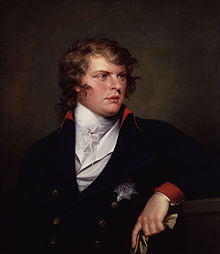
Augustus Frederick
Prince Augustus Frederick Duke of Sussex was the sixth son of George III of the United Kingdom and his consort, Charlotte of Mecklenburg-Strelitz. He was the only surviving son of George III who did not pursue an army or naval career.
Augustus Frederick was born at Buckingham House, London.
He was christened in the Great Council Chamber at St. James’s Palace, on 25 February 1773, by Archbishop of Canterbury Frederick Cornwallis. His godparents were The Duke of Saxe-Gotha-Altenburg (his paternal first cousin once-removed, for whom The Earl of Hertford, Lord Chamberlain, stood proxy), Duke George Augustus of Mecklenburg (his maternal uncle, for whom The Earl of Bristol, Groom of the Stole, stood proxy) and Princess Charles of Hesse-Cassel (his first cousin once-removed, for whom The Viscountess Weymouth, Lady of the Bedchamber to the queen, stood proxy).
He was tutored at home before being sent to the University of Göttingen in Germany in the summer of 1786, along with his brothers Prince Ernest and Prince Adolphus. Prince Augustus, who suffered from asthma, did not join his brothers in receiving military training in Hanover. He briefly considered becoming a cleric in the Church of England.
While travelling in Italy, he met Lady Augusta Murray (1768–1830), the second daughter of 4th Earl of Dunmore. The couple secretly married in Rome on 4 April 1793. The King’s minister of Hanover affairs Ernst zu Münster was sent to Italy, to escort him back to London.
The couple married again without revealing their full identities at St. George’s, Hanover Square, London, on 5 December 1793. Both marriages took place without the knowledge or the consent of the King.
In August 1794, the Prerogative Court annulled the marriage on the grounds that it contravened the Royal Marriages Act 1772 because it had not been approved by the King. Prince Augustus continued to live with Lady Augusta until 1801, when he received a parliamentary grant of £12,000.
Lady Augusta retained custody of the children and received maintenance of £4,000 a year. The two children were named Augustus Frederick D’Este and Ellen Augusta Emma, Mademoiselle D’Este, both parents being descended from the royal House of Este. In 1806 their mother, Lady Augusta, was given royal licence to use the surname D’Ameland instead of Murray.
The King created him Duke of Sussex, Earl of Inverness, and Baron Arklow in the Peerage of the United Kingdom and a Knight of the Garter on 27 November 1801. Since he had no legitimate issue, the title became extinct on his death in 1843. In 1815 The Duke became a Patron of the Jews’ Hospital and Orphan Asylum, later to become the charity known today as Norwood. Royal patronage continued, with Queen Elizabeth II eventually becoming Norwood’s patron.
The Duke of Sussex married a second time on 2 May 1831 (again in contravention of the Royal Marriages Act) to Lady Cecilia Letitia Buggin (1793–1873), the eldest daughter of Arthur Gore, 2nd Earl of Arran and Elizabeth Underwood; and the widow of Sir George Buggin. Even allowing for the irregularity of these marriages, this second marriage would not have been bigamous since Lady Augusta D’Ameland (Lady Augusta Murray) had died the year before. On the same day, Lady Cecilia assumed by Royal Licence the surname Underwood. She was never titled or recognized as the Duchess of Sussex. However, she was created Countess of Inverness in her own right in 1840.
William IV appointed his younger brother Chief Ranger and Keeper of St. James’s and Hyde Parks on 29 January 1831. The Duke of Sussex was elected president of the Society of Arts in 1816 and held that post for the rest of his life. He also held the honorary posts of Captain-General and Colonel of the Hon. Artillery Company from 1817 onward. He was president of the Royal Society between 1830 and 1838, and had a keen interest in biblical studies and Hebrew. In 1838, he introduced in a meeting scientist John Herschel, and the Duke gave a speech in which he spoke about the compatibility of science and religion.
The Duke of Sussex was the favourite uncle of Queen Victoria. He gave her away at her wedding to Prince Albert of Saxe-Coburg-Gotha. The Duke of Sussex died at Kensington Palace in 1843. In his will he specified that he was not to have a state funeral and was accordingly buried at Kensal Green Cemetery on 5 May 1843. He is buried in front of the main chapel, immediately opposite the tomb of his sister, Princess Sophia.
The Countess of Inverness continued to reside at Kensington Palace until her death in 1873. She was buried next to her second husband.
His Children by Lady Augusta Murray
Augustus Frederick d’Este (1794-1848)
Augusta Emma de’s (1801-1866) who married Thomas Wilde, 1st Baron Truro

January 9, 2015
Regency Personalities Series-Elizabeth Gunning 1st Baroness of Hamilton of Hameldon Duchess of Argyll
Regency Personalities Series
In my attempts to provide us with the details of the Regency, today I continue with one of the many period notables.
Elizabeth Gunning 1st Baroness of Hamilton of Hameldon Duchess of Argyll
December 1733 – 20 December 1790
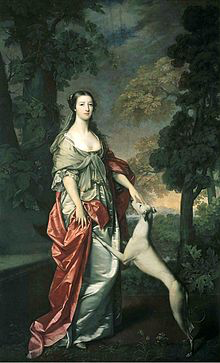
Elizabeth Gunning
Elizabeth Gunning 1st Baroness of Hamilton of Hameldon Duchess of Argyll was born in Hemingford Grey, Huntingdonshire, she was the daughter of John Gunning of Castle Coote, County Roscommon and his wife, the Hon. Bridget Bourke, daughter of Theobald Bourke (1681–1741), 6th Viscount Mayo. Elizabeth’s elder sister was Maria Gunning.
In late 1740 or early 1741, the Gunning family returned to John Gunning’s ancestral home in Ireland, where they divided their time between their home in Roscommon, and a rented house in Dublin. According to some sources, when Maria and her sister Elizabeth came of age, their mother urged them to take up acting in order to earn a living, due to the family’s relative poverty. The sources further state that the Gunning sisters worked for some time in the Dublin theatres, befriending actors like Margaret Woffington, even though acting was not considered a respectable profession as many actresses of that time doubled as courtesans to wealthy benefactors. However, other sources differ and point out that Margaret Woffington did not arrive in Dublin until May 1751, by which time Maria and her sister Elizabeth were in England.
In October 1748, a ball was held at Dublin Castle by the Viscountess Petersham. The two sisters did not have any dresses for the gathering until Tom Sheridan, the manager of one of the local theatres, supplied them with two costumes from the green room, those of Lady Macbeth and Juliet. Wearing the costumes, they were presented to the Earl of Harrington, the then Lord Lieutenant of Ireland. Harrington must have been pleased by the meeting as, by 1750, Bridget Gunning had persuaded him to grant her a pension, which she then used to transport herself, Maria, and Elizabeth, back to their original home in Huntingdon, England. With their attendance at local balls and parties, the beauty of two girls was much remarked upon. They became well-known celebrities, their fame reaching all the way to London, with themselves following soon afterwards. On 2 December 1750, they were presented at the court of St James. By this time, they were sufficiently famous that the presentation was noted in the London newspapers.
Elizabeth was immortalized in portraits by, among others, artists Sir Joshua Reynolds and Gavin Hamilton .
In January 1752, Elizabeth met the Duke of Hamilton. According to Walpole, on 14 February (St. Valentine’s Day) at a party at Bedford House, the duke declared his desire to marry Elizabeth that night and he called for a local parson to perform the ceremony. However, without a license, calling of banns, and a ring, the parson refused. They were eventually married that night in Mayfair Chapel (which did not require a license) in a clandestine marriage, with a ring from a bed-curtain, whereupon Elizabeth became the Duchess of Hamilton.
When the duke died in 1758, she became engaged to the 3rd Duke of Bridgewater, but the engagement was cancelled that year for reasons unknown. On 3 February the following year she married John Campbell, Marquess of Lorne.
From 1761 to 1784, she was a Lady of the Bedchamber to Queen Charlotte. Her husband later succeeded to his father’s title of Duke of Argyll in 1770, and Elizabeth became known as the Duchess of Argyll. On 20 May 1776, King George III, a long time admirer of hers, created her Baroness Hamilton of Hameldon in her own right.
She had three children from her first marriage with the Duke of Hamilton:
Lady Elizabeth Hamilton (26 January 1753 – 14 March 1797), married Edward Smith-Stanley, 12th Earl of Derby
James Douglas-Hamilton, 7th Duke of Hamilton (18 February 1755 – 7 July 1769)
Douglas Douglas-Hamilton, 8th Duke of Hamilton (24 July 1756 – 2 August 1799)
She had five children from her second marriage with the Duke of Argyll:
Lady Augusta Campbell
George John Campbell, Earl of Campbell (1763–1764)
George Campbell, 6th Duke of Argyll (1768–1839)
Lady Charlotte Campbell(1775–1861)
John Campbell, 7th Duke of Argyll (1777–1847)

Two Peas in A Pod, A Regency Romance
Two Peas in a Pod has now passed the exclusivity to Amazon test and is available in wider release, electronically (digitally) for other readers now. We sold a few copies on Amazon but nothing to warrant an exclusivity period. Amazon is too big and too full of itself.
Two Peas in a Pod is still available as a Trade paperback click here to order Regency Assembly Press.
$3.99 for an electronic copy. The Trade Paperback, due to publishing costs and the cut that Amazon takes continue to see a Trade Paperback costing $15.99 (The much hyped royalties that we writers are supposed to get is nowhere near what the news reports say. Most of that price is taken by Amazon.)
iBookstore (These are my books
and still at Amazon
Here is a picture, which of course you can click on to go fetch the book:
Love is something that can not be fostered by deceit even should one’s eyes betray one’s heart.
Two brothers that are so close in appearance that only a handful have ever been able to tell them apart. The Earl of Kent, Percival Francis Michael Coldwell is only older than his brother, Peregrine Maxim Frederick Coldwell by 17 minutes. They may have looked as each other, but that masked how they were truthfully quite opposite to one another.
For Percy, his personality was one that he was quite comfortable with and more than happy to let Perry be of a serious nature. At least until he met Veronica Hamilton, the daughter of Baron Hamilton of Leith. She was only interested in a man who was serious.
Once more, Peregrine is obliged to help his older brother by taking his place, that the Earl may woo the young lady who has captured his heart. That is, until there is one who captures Peregrine’s heart as well.
There is a visual guide to Two Peas in a Pod 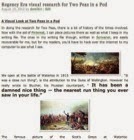 as well at Pinterest and a blog post here.
as well at Pinterest and a blog post here.


